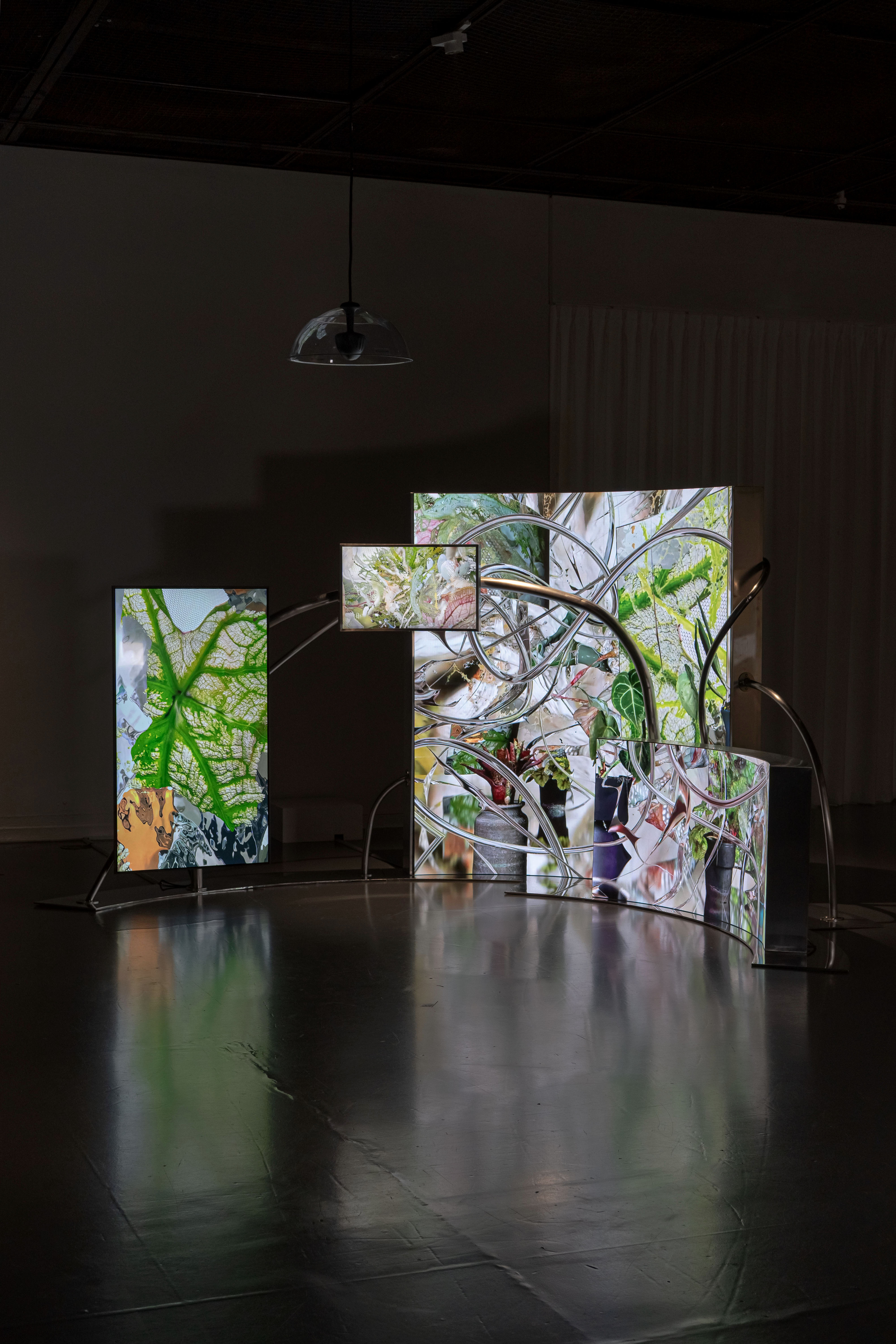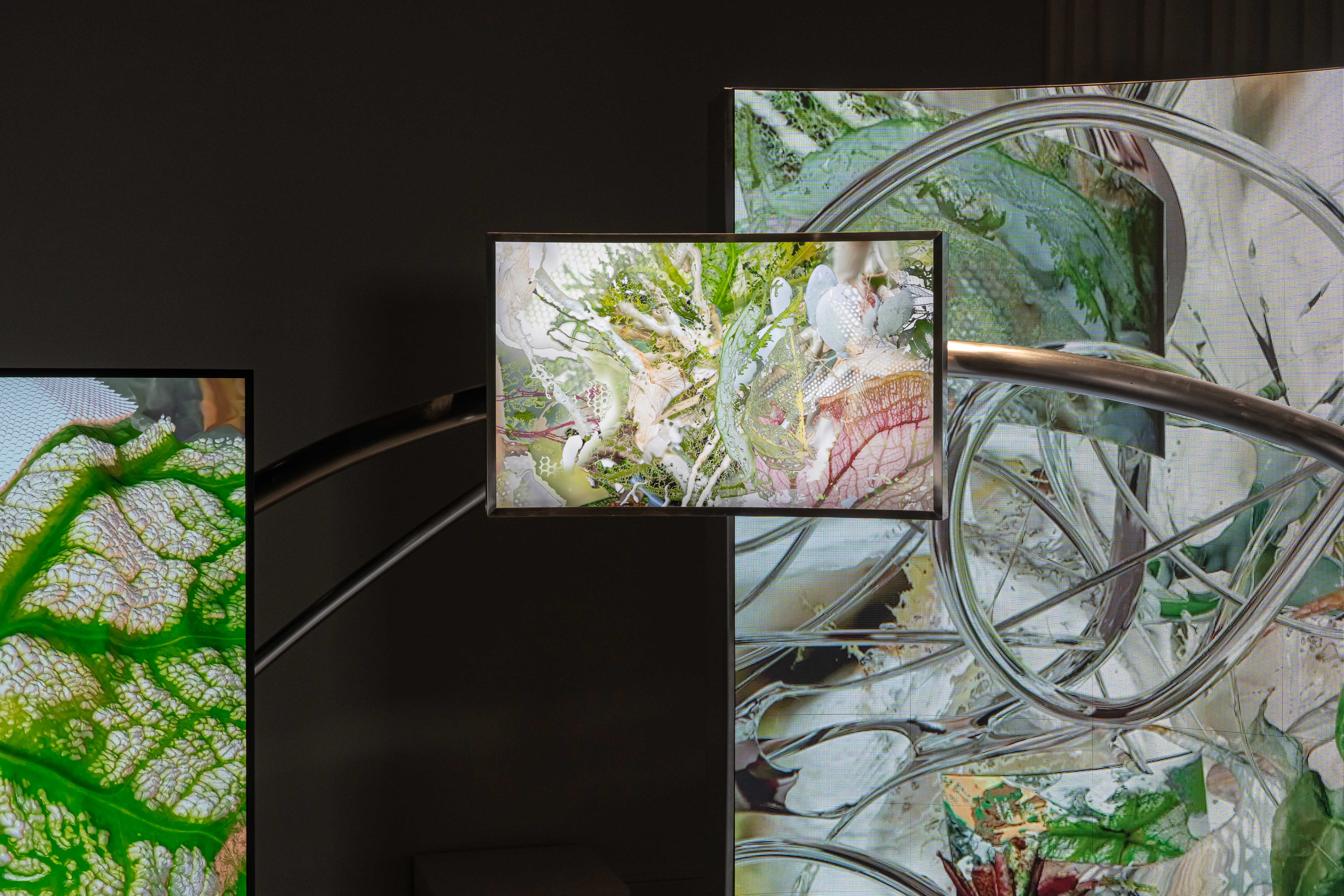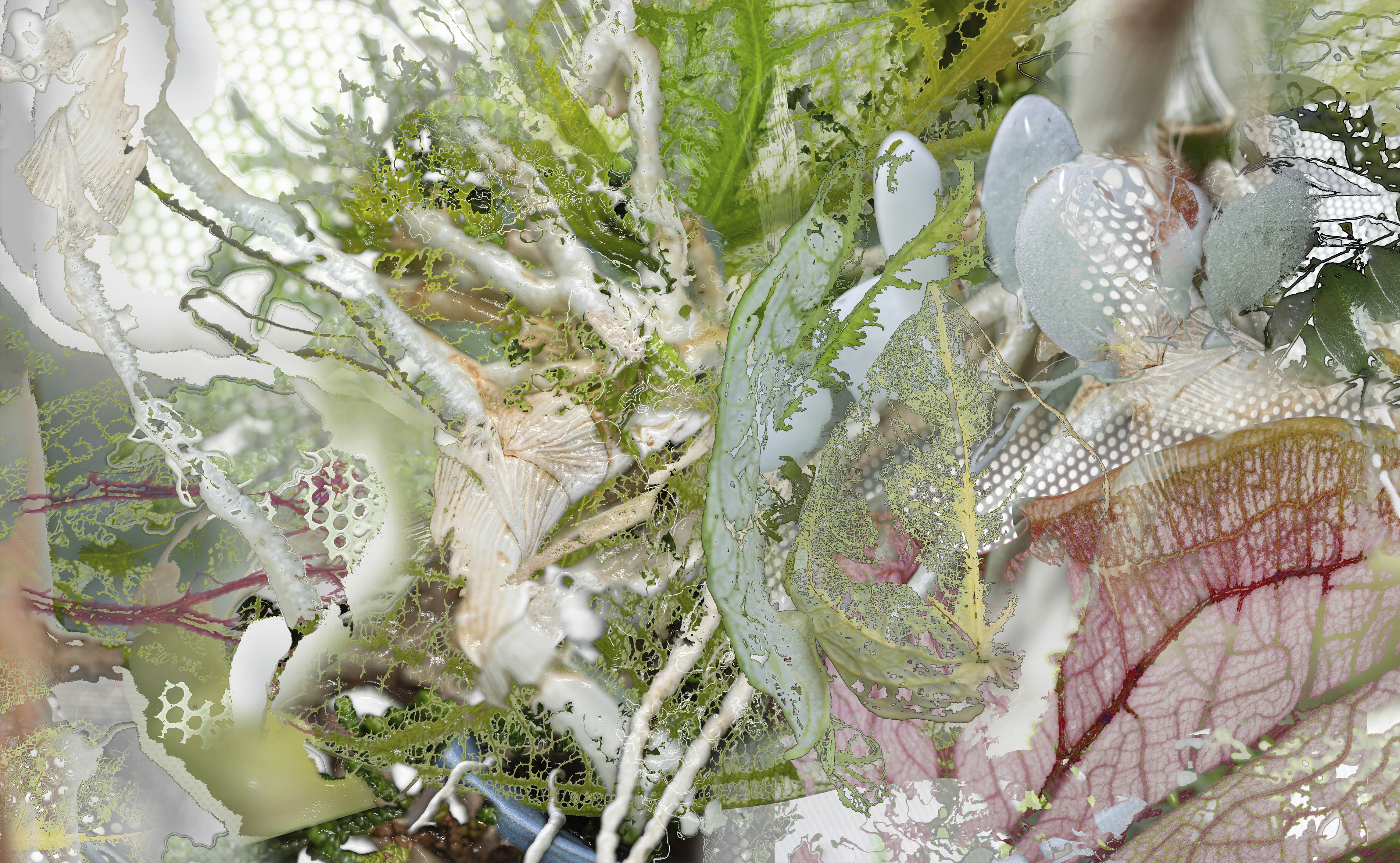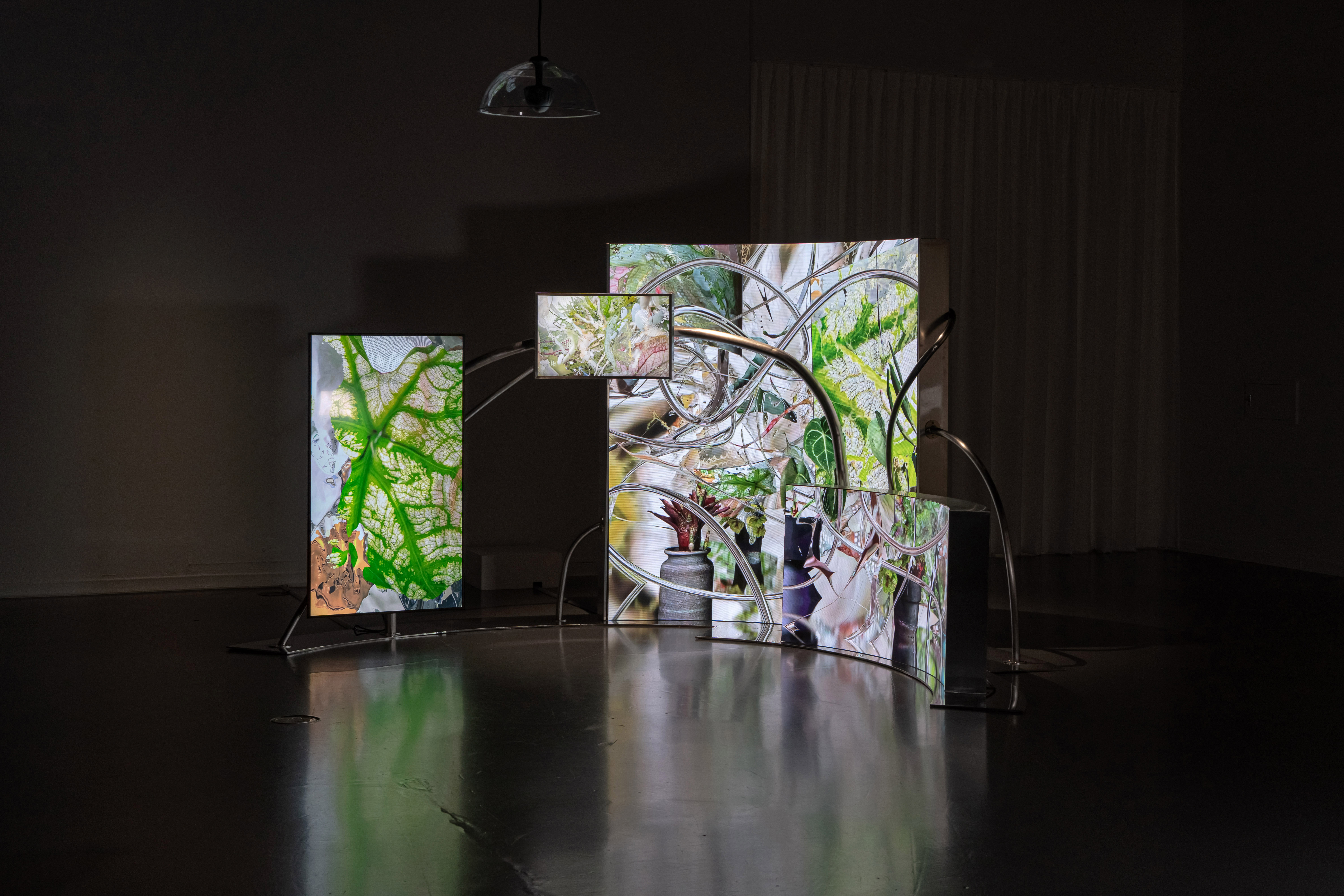





Multi-channel Video, stainless steel, 65inch TV, light panel, flexible LED, Variable installation
Commissioned by Seoul Museum of Art and Abu Dhabi Festival
Installed at SeMA
다채널 비디오, 스테인레스 스틸, 65인치 티비, 라이트 패널, 플랙시블 LED, 가변 설치
서울시립미술관과 아부다비 페스티벌의 공동 의뢰 작품
서울시립미술관 서소문본관 설치
Macromachineplantincubator 〈미세기계생명배양장치〉, (2024)
Gijeong Goo, who has been embodying nature within the features and experiences of digital devices, raises questions in his latest work about how urban dwellers can remain useful to nature and sustain an attitude inspired by it, even in a state of isolation from nature. He also explores whether it is possible to transcend anthropocentrism without physically moving the body. The work was inspired and initiated by the nature-friendly design studio of the artist's friend. By designing the growth and combination of various plants placed by the window of a small office in an urban building, he was collecting and nurturing plants with strange patterns or unique colors, arranging them within the space, through the relationship between urban plant keepers (humans) and companion plants (non-humans). The artist photographed and 3D scaned the companion plants, collecting high-resolution data to create images. The images of TV and structures are then framed within actual screens, juxtaposing real and virtual imagery to induce a meditative immersion in the viewer. Through this, the artist questions the gap between experiencing meditative nature and the cycle of utilizing what is given in urban environments, such as digital devices and human technological design. He aims to deconstruct and reconstruct digital nature in the most urban manner.
자연을 디지털 장치의 특징과 경험 속에서 구현해온 구기정은 이번 신작을 통해 도시에 사는 사람이 어떻게 자연과 고립된 상태에서 자연에 쓸모 있는 인간으로 남으며 자연에 영감 받는 태도를 지속할 수 있을지, 몸의 이동 없이 인간 중심주의를 벗어나는 것이 가능한가에 대해 질문합니다. 작업은 지인의 자연-친화적 디자인 스튜디오에 영감을 받아 촉발되었습니다. 도심 속 건물 안 좁은 사무실 창가에 배치된 다양한 식물의 생장과 조합의 변화를 설계하면서 도시 속 식집사(인간)와 반려 식물(비인간)의 관계 맺기를 통해 기이한 패턴이나 특이한 색감 등을 가진 식물을 모으고 가꿔서 공간에 배치하고 있었습니다. 작가는 반려 식물을 촬영, 3D 스캔하고 고화질의 데이터를 수집하여 이미지를 제작하고 티비와 구조물 이미지를 실제 화면 안에 액자식으로 배치하여 실제-가상 이미지를 병치하고 관람자의 명상적 몰입을 유도합니다. 이를 통해 디지털 기기나 인간공학적 디자인과 같이 도시에서 주어진 것들로 순환하고 명상적인 대자연을 경험하는 것 사이의 간극에 대해 질문하며 가장 도시적인 방식으로 디지털 자연을 해체하고, 또 구성하고자 합니다.
Gijeong Goo, who has been embodying nature within the features and experiences of digital devices, raises questions in his latest work about how urban dwellers can remain useful to nature and sustain an attitude inspired by it, even in a state of isolation from nature. He also explores whether it is possible to transcend anthropocentrism without physically moving the body. The work was inspired and initiated by the nature-friendly design studio of the artist's friend. By designing the growth and combination of various plants placed by the window of a small office in an urban building, he was collecting and nurturing plants with strange patterns or unique colors, arranging them within the space, through the relationship between urban plant keepers (humans) and companion plants (non-humans). The artist photographed and 3D scaned the companion plants, collecting high-resolution data to create images. The images of TV and structures are then framed within actual screens, juxtaposing real and virtual imagery to induce a meditative immersion in the viewer. Through this, the artist questions the gap between experiencing meditative nature and the cycle of utilizing what is given in urban environments, such as digital devices and human technological design. He aims to deconstruct and reconstruct digital nature in the most urban manner.
자연을 디지털 장치의 특징과 경험 속에서 구현해온 구기정은 이번 신작을 통해 도시에 사는 사람이 어떻게 자연과 고립된 상태에서 자연에 쓸모 있는 인간으로 남으며 자연에 영감 받는 태도를 지속할 수 있을지, 몸의 이동 없이 인간 중심주의를 벗어나는 것이 가능한가에 대해 질문합니다. 작업은 지인의 자연-친화적 디자인 스튜디오에 영감을 받아 촉발되었습니다. 도심 속 건물 안 좁은 사무실 창가에 배치된 다양한 식물의 생장과 조합의 변화를 설계하면서 도시 속 식집사(인간)와 반려 식물(비인간)의 관계 맺기를 통해 기이한 패턴이나 특이한 색감 등을 가진 식물을 모으고 가꿔서 공간에 배치하고 있었습니다. 작가는 반려 식물을 촬영, 3D 스캔하고 고화질의 데이터를 수집하여 이미지를 제작하고 티비와 구조물 이미지를 실제 화면 안에 액자식으로 배치하여 실제-가상 이미지를 병치하고 관람자의 명상적 몰입을 유도합니다. 이를 통해 디지털 기기나 인간공학적 디자인과 같이 도시에서 주어진 것들로 순환하고 명상적인 대자연을 경험하는 것 사이의 간극에 대해 질문하며 가장 도시적인 방식으로 디지털 자연을 해체하고, 또 구성하고자 합니다.
